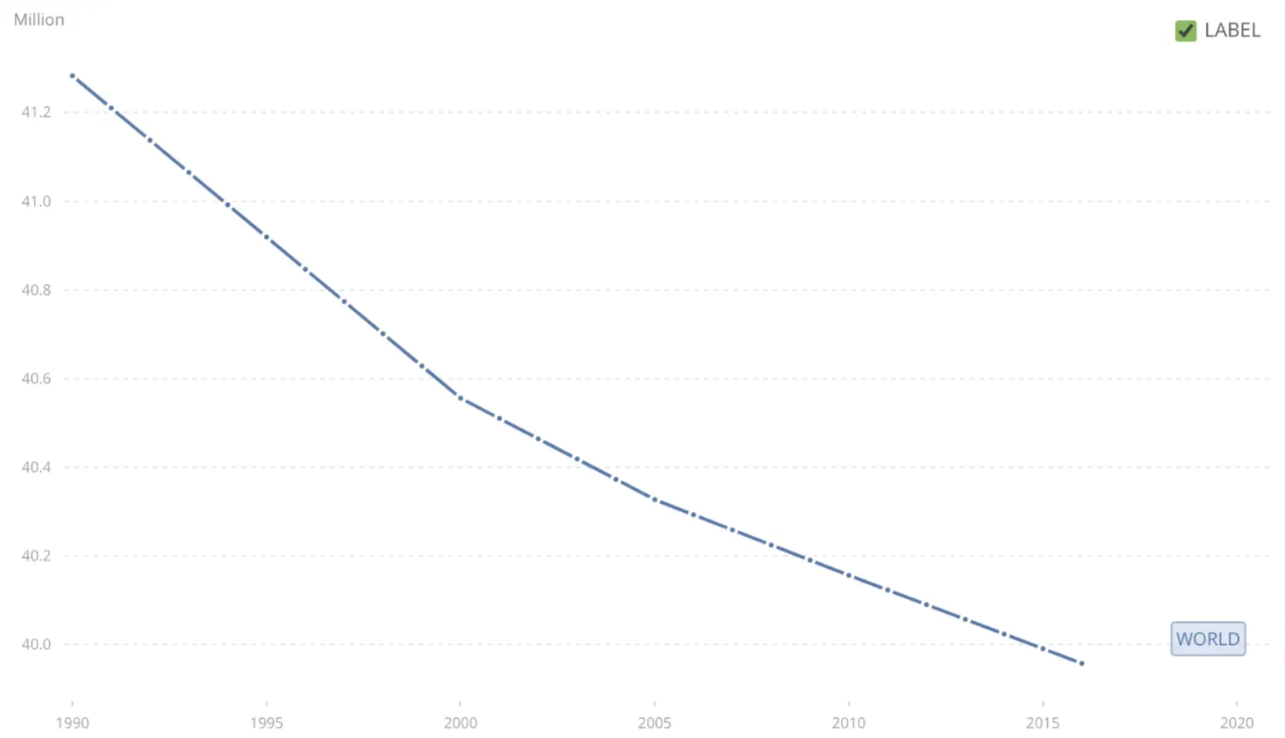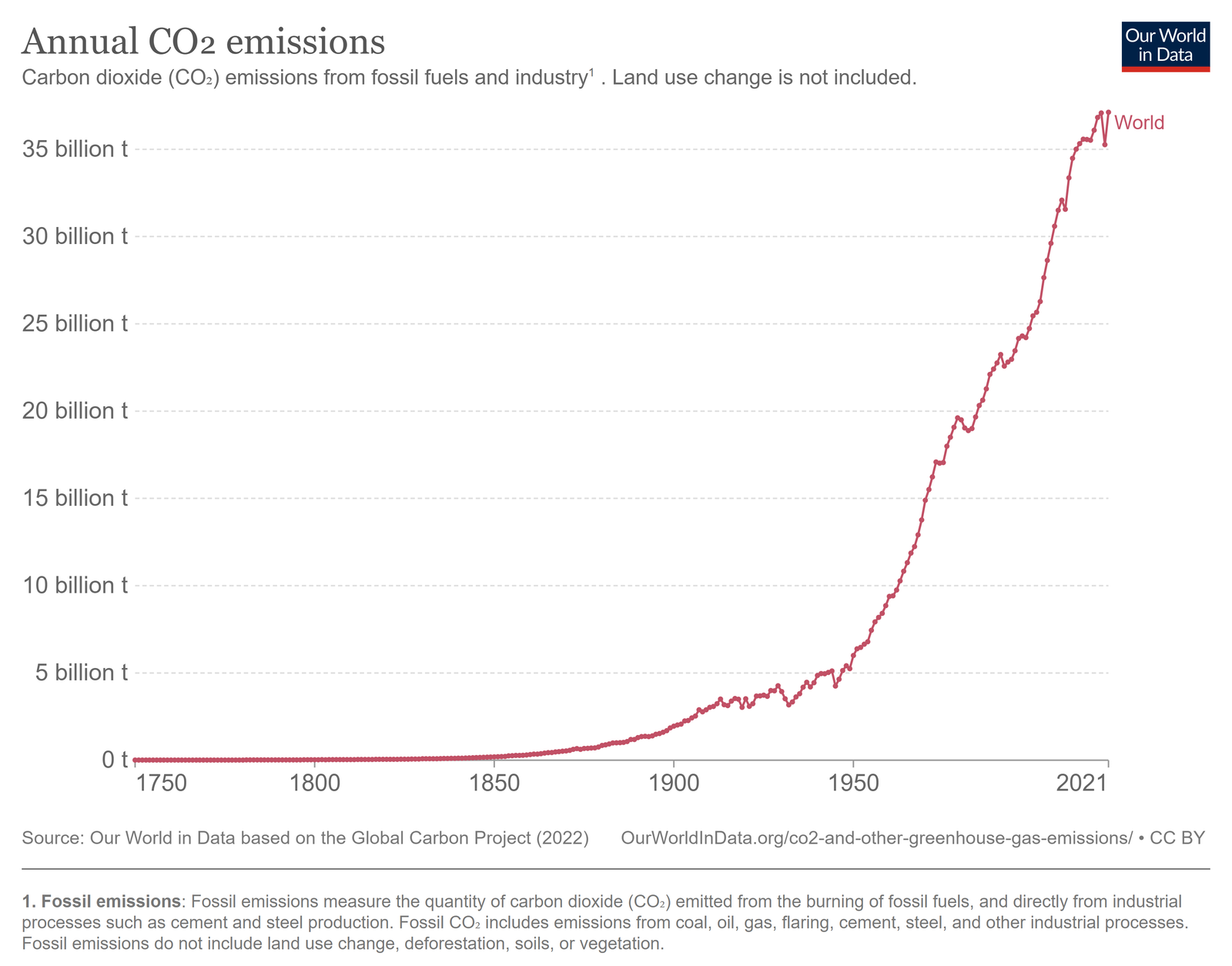Global Deforestation in Numbers


· 5 min read
Forests are central in developing solutions both to mitigate and adapt to climate change. These terrestrial ecosystems have already removed nearly one third of human-produced carbon dioxide emissions from the atmosphere. Through sustainable forest management, they could remove much more, — Liu Zhemin, head of the UN’s Department of Economic and Social Affairs.
The average tree can absorb approximately 10 kilograms (22 pounds) of carbon dioxide per year for the first 20 years [1]. About 30% of carbon emissions, which are released into the environment from burning fossil fuels, are absorbed by trees. It is obvious, how crucial is the role of forests in our lives and in maintaining homeostasis in the environment. However, the forest cover is rapidly reducing each year. Its global area has declined by more than 60% over the past 60 years [2], which poses a threat to the lives of all living beings on our planet.

1,324 million km² of forests were lost during this period of time — less than 30 years — and this number continues to grow.
The main cause of deforestation is industrial agriculture, which is responsible for around 85% of lost forests’ area. This includes plantations of soy beans and grains to feed livestock, as well as palm oil plantations, which are major contributors to deforestation in countries like Indonesia and Malaysia [3].
And how much do we release? More than 35 billion tons per year.

Let’s assume that trees could solve all our emission problems.
If an average tree would absorb 25 kg (between 10 kg and 40 kg) of CO2 emissions per year, we need 1.4 trillion trees. According to the article in the Nature journal, there are approximately 3.04 trillion trees worldwide [4]. It sounds like we have it all covered, twice as much as we need. However, in this diagram, we see just fossil and industry emissions, which make up nearly 80% of all emissions. It means that the other 20% will make nearly 8.75 billion tons in addition, that gives us 43.75 billion tons as a 100%. For that, we will need 350 billion trees more.
But we still have it covered, because we need just 1.75 trillion trees.
However, there is one tiny thing we have forgotten — there is naturally emitted CO2.
Human activity broke the planet’s natural carbon cycle, and nature cannot prioritize one type of emissions to another. According to Daniel Rothman, MIT professor of geophysics, altogether the planet absorbs and emits about 100 billion tons of carbon dioxide through this natural cycle every year. If forests were the only ones responsible for absorbing these emissions, how many trees would we need for that? 4 trillion trees just to absorb naturally emitted CO2. Luckily, forests are not alone, they still have soil and the ocean to help them overcome this issue. But who will help to absorb human-made CO2?
According to the research report, these 900 million ‘extra’ hectares could store 205 gigatons of carbon. They concluded, that reforestation has the potential to absorb more than 2/3 of all CO2 damaging emissions, release into the atmosphere by human activity.
As of 2020, the UN estimates the planet is losing over 7,000,000 hectares per year to deforestation. And the number of illegally logged trees is quite imprecise — between 50% to 90%. Even if we take the lowest possible number, it means that 3.5 million hectares of trees are lost due to illegal activity. If we look back at our calculations (1,324 million km² of trees that we lost in the last 30 years), and assume that 50% is due to illegal logging, we will have 66.2 million hectares of trees which could have absorbed around 430 million tons of CO2 per year.
Every year, people cut down approximately 15 billion trees globally and plant around 5 billion [5]. So we lose 10 billion trees each year. According to previous statements, there are around 3 trillion trees left in the world. So, with simple math, we can conclude that in 300 years there will be no trees left on Earth if the deforestation level will remain the same.
But why should we care, we won’t live that long (unless someone will create the elixir of immortality, which is the topic for the separate article). But if people will think just about themselves, there will be no people in the couple of centuries. And we still have to remember, that:
The present generations have the responsibility to bequeath to future generations an Earth which will not one day be irreversibly damaged by human activity. Each generation inheriting the Earth temporarily should take care to use natural resources reasonably and ensure that life is not prejudiced by harmful modifications of the ecosystems and that scientific and technological progress in all fields does not harm life on Earth, — Article 4 of the UNESCO Declaration on the Responsibilities of the Present Generations Towards Future Generations.
This article is also published on Medium. Future Thought Leaders is a democratic space presenting the thoughts and opinions of rising Sustainability & Energy writers, their opinions do not necessarily represent those of illuminem.
Gokul Shekar

Effects · Climate Change
illuminem briefings

Mitigation · Climate Change
illuminem briefings

Climate Change · Environmental Sustainability
The Guardian

Agriculture · Climate Change
Euronews

Climate Change · Effects
The Wall Street Journal

Climate Change · Effects